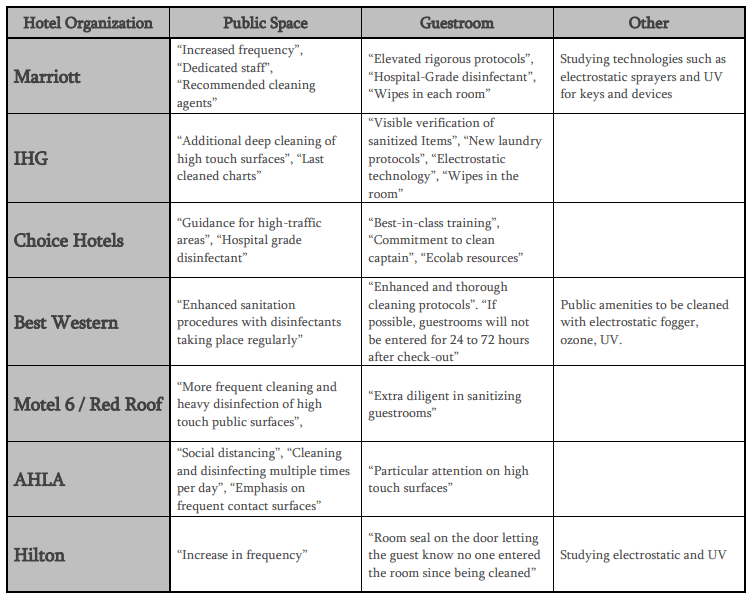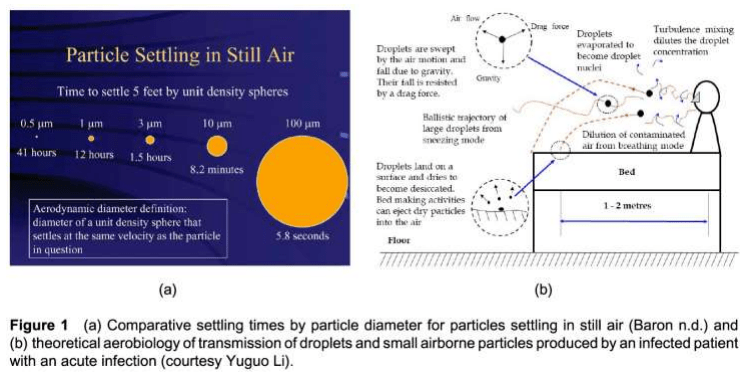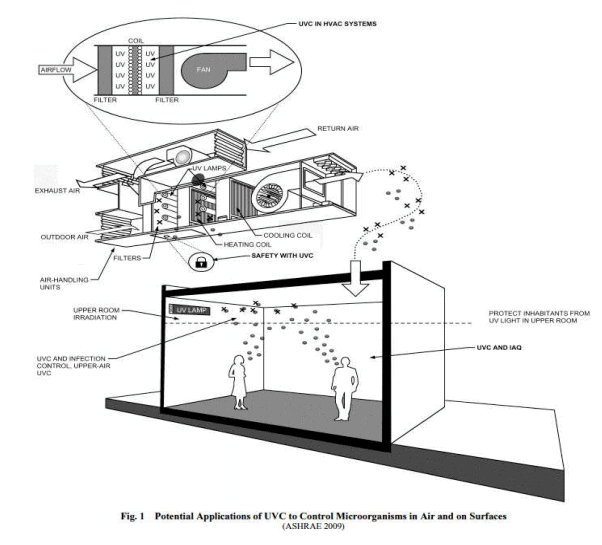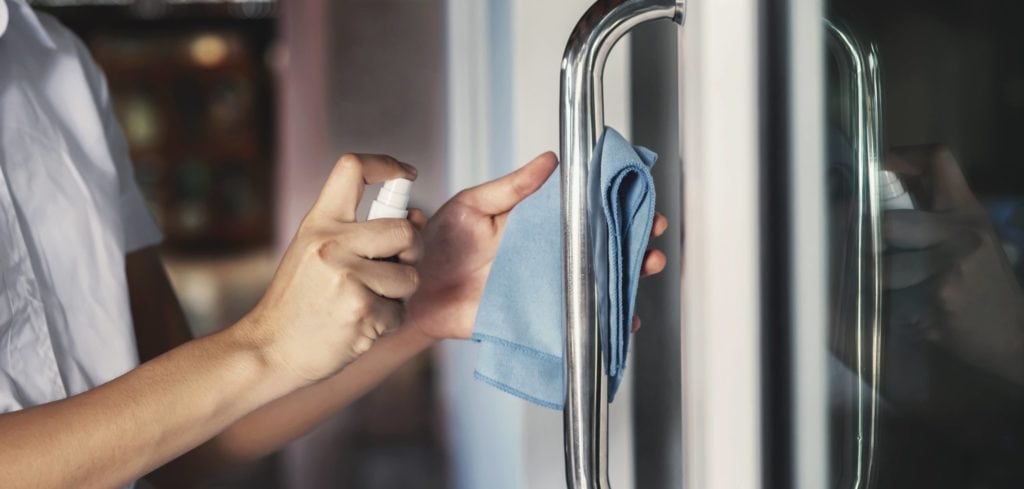Overview
The Covid-19 pandemic has had an immense economic impact on hotels. The market was strong, and hotels were flying high, and then, the faucet turned off virtually overnight. Increasing cases of coronavirus led to stay at home orders which kept most businesses closed and travel came to a virtual stop. This has been an event, unlike anything almost all of us have ever seen.
The business community as a whole is now gearing up to get back to work. Every type of business is scrambling to figure out how they can drive consumer confidence and get customers to return. Hotels have a unique challenge in that virtually every day, there are some new guests from some new part of the country or from overseas. How do you keep your employees safe? How do you keep your guests safe?
Hotel franchisors have answered by developing programs for driving consumer confidence to return guests to their properties. Are these programs effective against mitigating the transmittance of pathogens at your property? Will these programs keep your guests and employees safe
The Coronavirus
The virus and the disease have different names. The virus is SARS-CoV-2 (Severe Acute Respiratory Syndrome Coronavirus 2) and the disease caused by the virus is coronavirus disease (COVID-19). The virus primarily spreads between people through close contact and via respiratory droplets produced from coughs or sneezes. It mainly enters human cells by binding to the receptor angiotensin-converting enzyme 2 (ACE2). There have been numerous recommendations in combating this virus such as social distancing (6ft, possibly more with some studies), masks or no masks (guidelines have continued to change), etc. The bottom line is that WHO, the CDC, and others, do not know exactly as there just is not enough data and there are no studies specific to this particular strain of coronavirus. We do know it spreads via droplets in the air and from contaminated surfaces.
The Hotel Brands “Clean” Programs
We have reviewed programs from Marriott, IHG, Choice, Best Western, Motel 6/Redroof, AHLA, and Hilton. They have a lot in common pretty much saying the same things such as: “Increased frequency of cleaning”, “Enhanced Sanitation Practices”, “Particular attention on high touch surfaces”, “Deep cleaning of high touch surfaces”, etc. These are vague statements that are easier said than done. Execution is a more difficult day in and day out. Don’t get me wrong, these programs have some excellent components with improved procedures, recommendations for PPE, staff
guidance, social distancing, and many other items. Overall, though, my opinion is that these are heavy on marketing and light on actual disinfection.

Cleaning with Chemicals
It seems hotel brands have moved in the direction of using more chemicals for disinfection. The issue with chemical usage on a large scale in hotels is variability. Chemicals require dwell time to destroy viruses. Most disinfecting chemicals require approximately 4 minutes of dwell time during which the surface must be visibly “wet” or else, the virus will not be destroyed. Spray and wipe will not work and that is what is typically done in hotels. The challenge is then how to spray to coat the surface with enough chemical to keep it wet for 4 minutes (or whatever time your particular disinfectant requires) prior to drying? You cannot spray with the precision needed with a spray bottle. If you are going to use chemicals, you need an electrostatic sprayer with an adjustable nozzle to deliver the correct amount of chemical and coat the surface evenly. Using spray bottles in hotel rooms and public areas is highly inefficient and will result in subpar disinfection while increasing supply costs dramatically.
In guestrooms, how do you disinfect the walls, the carpet, the drapes, lampshades, and other difficult to wipe surfaces? The coronavirus is airborne, and droplets can stay in the air for up to 41 hours after someone talks, coughs, or sneezes (from ASHRAE Position Document on Infectious Aerosols, April 14, 2020). If surfaces are sprayed and wiped, most viruses will still survive and will remain on the surface “cleaned”. If someone takes the time to spray enough chemicals on every high touch surface and lets it dwell for the appropriate time, how much chemical will that take and how long will it take to clean a room? What happens when the chemical dries? No residue? No build-up? At some point, this will have to be washed off.
It’s an Airborne Respiratory Disease, What about the air?
One commonality with all of the hotel brand programs is that they make no mention of any type of air treatment. This is an airborne virus and yet nothing to address the air. Here are position statements from ASHRAE in relation to HVAC recommendations:
ASHRAE’s statement on airborne transmission of SARS-CoV-2/COVID-19
Transmission of SARS-CoV-2 through the air is sufficiently likely that airborne exposure to the virus should be controlled. Changes to building operations, including the operation of heating, ventilating, and air conditioning systems, can reduce airborne exposures.
ASHRAE’s statement on the operation of heating, ventilating, and airconditioning systems to reduce SARS-CoV-2/COVID-19 transmission
Ventilation and filtration provided by heating, ventilating, and air conditioning systems can reduce the airborne concentration of SARS-CoV-2 and thus the risk of transmission through the air. Unconditioned spaces can cause thermal stress to people that may be directly life threatening and that may also lower resistance to infection. In general, disabling of heating, ventilating, and air-conditioning systems is not a recommended measure to reduce the transmission of the virus.
There is great concern about the real possibility of transmission through the air of various pathogens, especially SARSCoV-2, among staff and administration in healthcare facilities, office workers, retail workers and patrons, manufacturing workers, and residents in private and public facilities and the general public in outdoor settings and in public transportation.

Managing the amount of fresh air and using appropriate technologies to destroy airborne pathogens within the HVAC system is critical to mitigating the chances of a pathogen being spread throughout your facility. There are solutions that can destroy 99.9% of pathogens in the airstream within the main HVAC unit(s) and in typical in-room PTAC units. Not addressing the IAQ (Indoor Air Quality) considerably creates a more dangerous environment for employees and guests as the aerosol load is ever-increasing and biofilms are forming on the HVAC coils.

A Better Way Forward
So, what’s a hotelier to do to reduce the risk of pathogen transmittance to keep your employees and guests as safe as possible, not to mention negative PR and potential lawsuits? There are established protocols and technologies for controlling pathogens within a built environment. There is no one process or product that solves all the problems. One must take a multi-layered approach and address air and surface contaminants in the most effective, economical, and easy to integrate a way to minimize costs and maximize protection. Guestrooms can be easily disinfected in minutes with UV mobile units. This is clean, consistent, and fast. Clean because you are not dealing with messy chemicals, not filling bottles, no waste, and no constant monitoring of usage and inventory. Consistent because you
place it in the same spot every time and turn it on for the same duration. Chemicals are difficult to spray evenly (will vary by a person applying as well) and per the prescribed dwell time needed. Fast, typical hotel rooms take 4 minutes. Some room configurations require two units at once. Save on labor and no waiting. Once the room is disinfected, you can enter right away as UV has no byproducts, no ozone, nothing! Our calculations show utilizing one unit per room costs the hotel 3.7 cents per room to disinfect and you can disinfect 135,000 rooms with the initial life (9000hrs) of the
emitters at 4-minute cycles. After replacing the emitters, your cost drops to less than a penny to disinfect a room. Not only do you disinfect surfaces, but you also disinfect drapes, walls, carpet, bedding, lampshades, and anything else in the room in view of the light.
Air, what do we do with the air? Most hotel rooms are heated and cooled with a PTAC unit or mini-split system. A UV emitter can be placed behind the coil in the unit which keeps the coil and unit cleans and disinfects the air stream passing through it. When a guest is in the room and aerosols are released from talking, coughing, or sneezing, some of these aerosols will be pulled into the PTAC unit. If no disinfection is located inside the unit, the virus will live on the coil surface for up to 4 days and could be released back into the air when a new guest checks in. A properly sized UV emitter located in the PTAC unit will destroy all pathogens on the coil and disinfect (99.9% pathogen removal) the airflow thereby improving IAQ in guestrooms.
There are several solutions for public spaces and corridors to treat the air 24/7 thereby reducing the surface contaminants. We do recommend chemical-based disinfection for surfaces in high traffic areas that need constant attention applied using a high-quality electrostatic sprayer. This provides application consistency as well as lowering the cost of chemical supplies as the sprayers apply the chemical very efficiently with less waste.
Conclusion
There are many positive components to the hotel brand “Clean” programs. The social distancing, improved processes, signage, guidance & training, and other details are of critical importance. It is our opinion, however, that they do not go far enough to mitigate the risk of pathogen transmittance. Chemicals are the basis for disinfecting in all of these programs and that is a messy, inconsistent, and costly method to address surface contaminants and it does nothing for airborne contaminants. Hotel brands are securing vendors from which hoteliers are required to purchase from. This should not be the case. We repeatedly see vendors such as Ecolab within the hotel “Clean” programs. Hoteliers should be able to do their own research on disinfection and utilize processes and technologies which are proven to work. Hoteliers are concerned with keeping their employees and guests as safe as possible and do such with the lowest overall disruption and cost. Although chemical solutions have a lower upfront cost, the on-going cost of purchasing chemicals is high and will only get higher. Labor is another cost factor and to apply the chemicals properly, it will take considerable time to wet surfaces properly to achieve the dwell times needed for disinfection. This is a major weak point in using chemicals as the consistency of application is challenging. Most of these programs tout “Hospital Grade” disinfectants and the such, which is great PR and marketing but in reality, to achieve the kill rate for viruses the execution must be done properly, or else there is a false sense of security. It’s good marketing but if there is an incident, and it only takes one, all will be lost in negative PR.
Contact us today to learn about the various options you have to keep your guests and employees safe at your hotel property. Our team at Citra is ready to help you.

